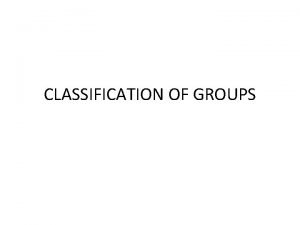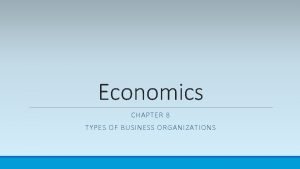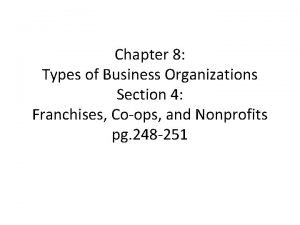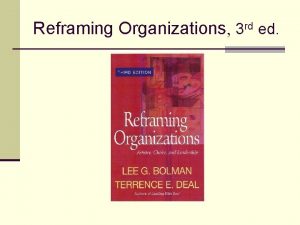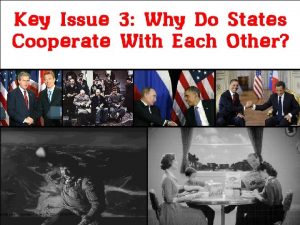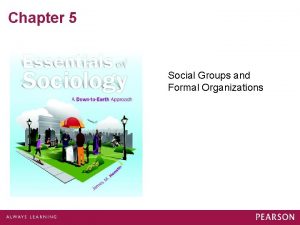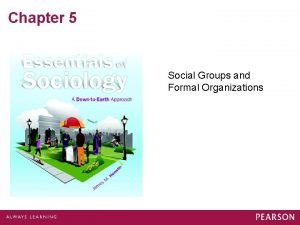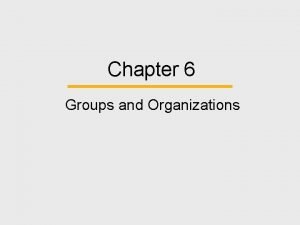Chapter 5 Groups Networks and Organizations Chapter Outline












- Slides: 12

Chapter 5 Groups, Networks, and Organizations

Chapter Outline § § § Human Relations Social Processes Groups Social Networks Complex Organizations

Social Processes Exchange - people bargain for things they want. Not always equitable. § Cooperation is basic to human survival. § Competition is inevitable when people perceive a scarcity of resources. § Conflict is struggle over resources. It is often inevitable and functional. §

Group Variables Size. As group size increases, interaction becomes more impersonal and more structured. 2. Proximity. People are more likely to interact when they are physically close to each other. 3. Communication patterns. The arrangement of a group affects the communication flow. 1.

Group Variables Cohesion. Attraction among group members is a measure of group cohesion. 2. Social control. Fear of not being accepted. 3. Decisions. Small groups prefer decision by consensus, large groups prefer majority rule. 4. Choice shifts. Tendency for opinions to converge. 1.

Types of Groups Primary groups, characterized by intimate, face-to-face interaction, are primary to our human nature. (Families and peer groups) § Secondary groups are formal, large, and highly structured. (Corporations, government agencies, and other secondary groups) §

Asch’s Experiment § Subjects were instructed to select the line on Card B that was equal in length to the line on Card A. The results showed that many people will give an obviously wrong answer in order to conform to the group.

Patterns of Communication

Differences between Primary and Secondary Groups Size Primary Secondary Small Large Relationships Personal, intimate Communication Face to face Impersonal, aloof Indirect Duration Temporary Permanent

Differences between Primary and Secondary Groups Primary Secondary Cohesion Strong sense of loyalty Based on selfinterest Decisions Based on tradition and personal feelings Based on rationality and rules Social structure Informal Formal

Characteristics of Bureaucracy § § § A specialized division of labor. A hierarchy of authority. Formal rules and regulations. Impersonal relationships. Careers based on tenure and technical qualification. Efficiency.

Criticisms of Bureaucracy Ritualism. Rules may be followed whether they apply or not. § Alienation. The emphasis on impersonal rules and hierarchies may reduce cohesion. § Structured inequality. Tendency to concentrate decision-making in the hands of a few people is seen as antidemocratic. §
 Formal groups fulfill both and functions in organizations.
Formal groups fulfill both and functions in organizations. Social groups and formal organizations
Social groups and formal organizations Virtual circuit network
Virtual circuit network How are ethnic groups and religious groups related
How are ethnic groups and religious groups related Basestore iptv
Basestore iptv Sentence outline
Sentence outline Cooley secondary groups
Cooley secondary groups Chapter 1 introduction to management
Chapter 1 introduction to management Chapter 3 information systems organizations and strategy
Chapter 3 information systems organizations and strategy Chapter 8 types of business organizations
Chapter 8 types of business organizations Section 4 other organizations
Section 4 other organizations Chapter 8 business organizations
Chapter 8 business organizations Reframing organizations chapter 3 summary
Reframing organizations chapter 3 summary






